Dreaming of a Mid-Summer Bounty of Home-grown Immature Ginger
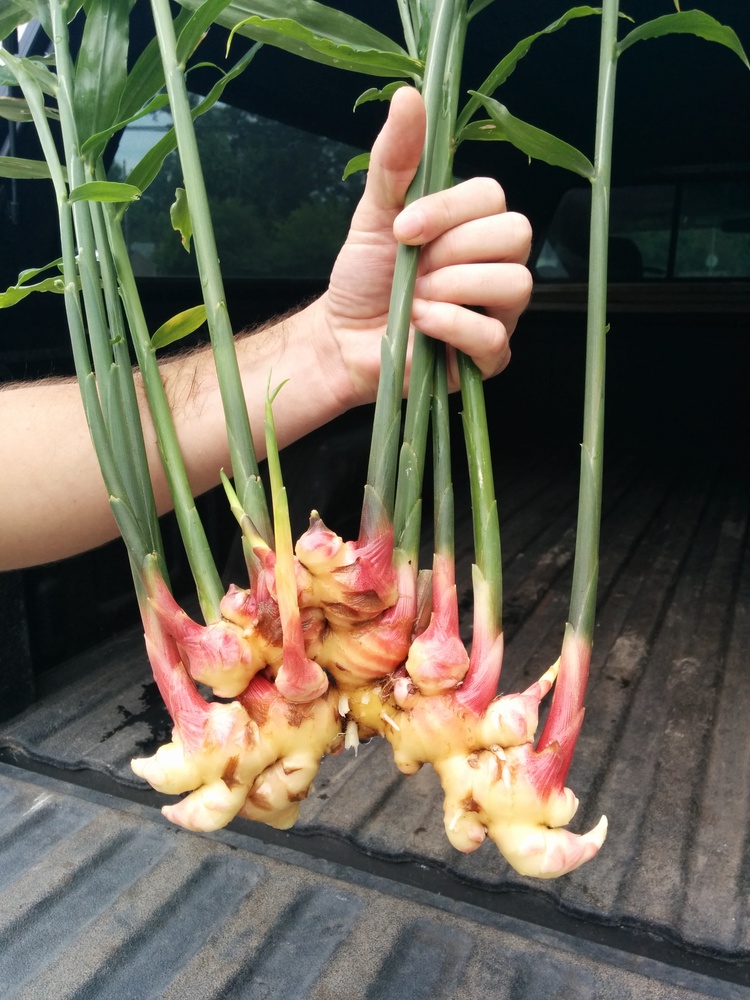
Young ginger photo courtesy of Joseph Swain
By Debra Knapke
Two years ago I purchased “baby” ginger at the Worthington Farmers Market (Worthington, Ohio) from Swainway Urban Farm. The immature rhizomes were pearly white with rose accents. The characteristic papery covering and the interior fibers had not developed, and the flavor was sweet and subtle with the lightest of bites.
Along with the flavor comes a bounty of health benefits. I’ve used ginger for years as a digestive aid. Many use it to relieve nausea and queasiness due to motion sickness, pregnancy and chemotherapy. Ginger has been found to reduce inflammation which makes it an option for the relief of headaches and different forms of arthritis. And it has been found to inhibit rhinoviruses which cause the common cold. But, some find mature ginger to be too strong, and this is where immature ginger is valuable. Its gentler scent and taste are tolerated by more people.
Could I grow immature ginger? Off I went to the grocery store to purchase ginger rhizomes. I planted them, watched them grow, and then moved the pot into my greenhouse in the fall. What I achieved was growing bigger, mature rhizomes that were nothing like the baby ginger. I missed something here.
Enter the solution – Joseph Swain was offering a workshop on growing immature ginger on a Sunday afternoon. This was an opportunity that was too good to miss.
Here are some of the major take-home notes from two and a half hours of time-well-spent:
• Start with organic ginger rhizomes. You might be able to find organic ginger at the grocery store, but much of it is not grown organically.
• When you cut your “seed” ginger, make sure you are working in a clean environment and are using a sharp knife.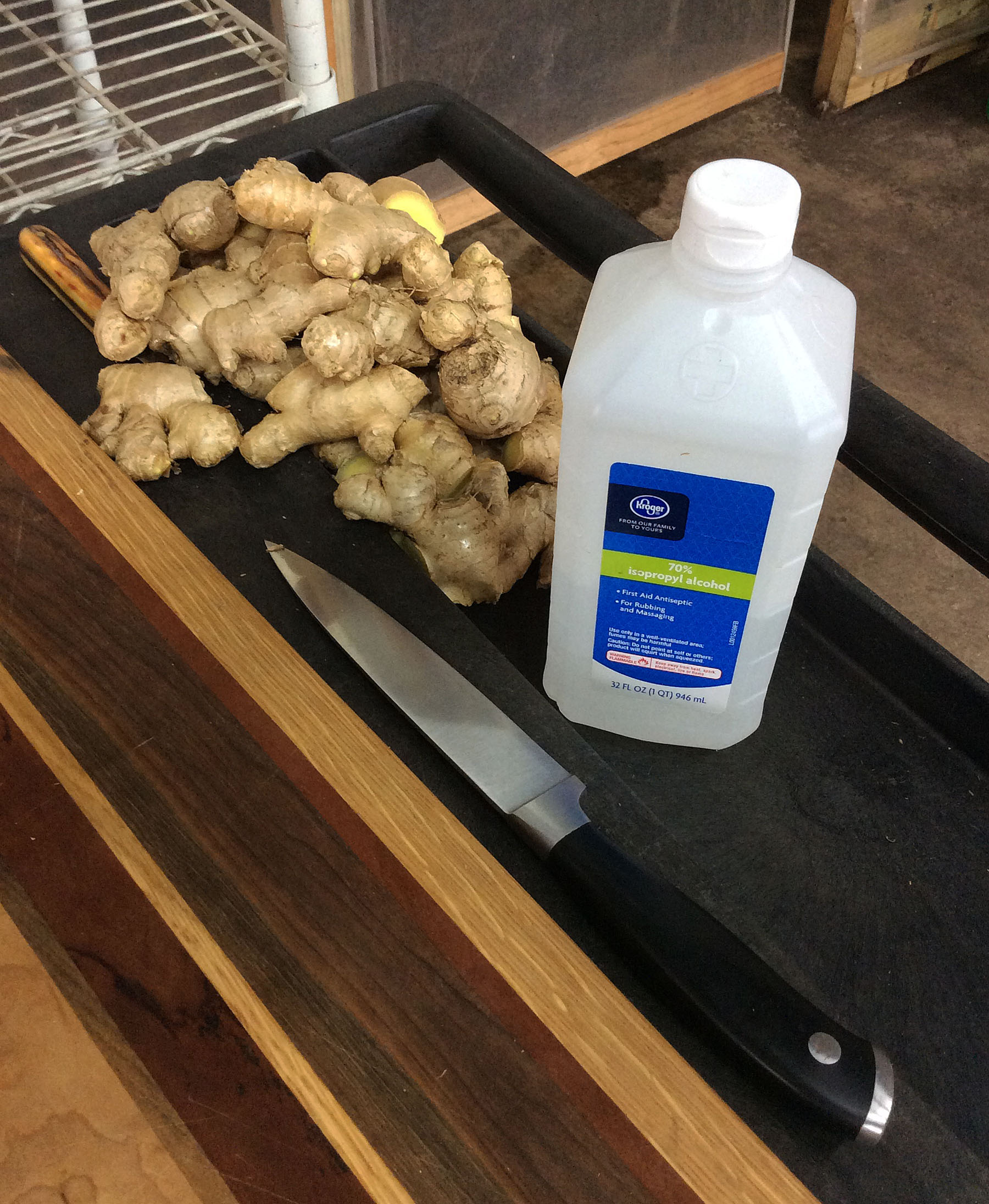
• When you cut your “seed” ginger, make sure you are working in a clean environment and are using a sharp knife.

Required tools for preparing your ginger seed
• Use a well-draining, organic soilless mix.
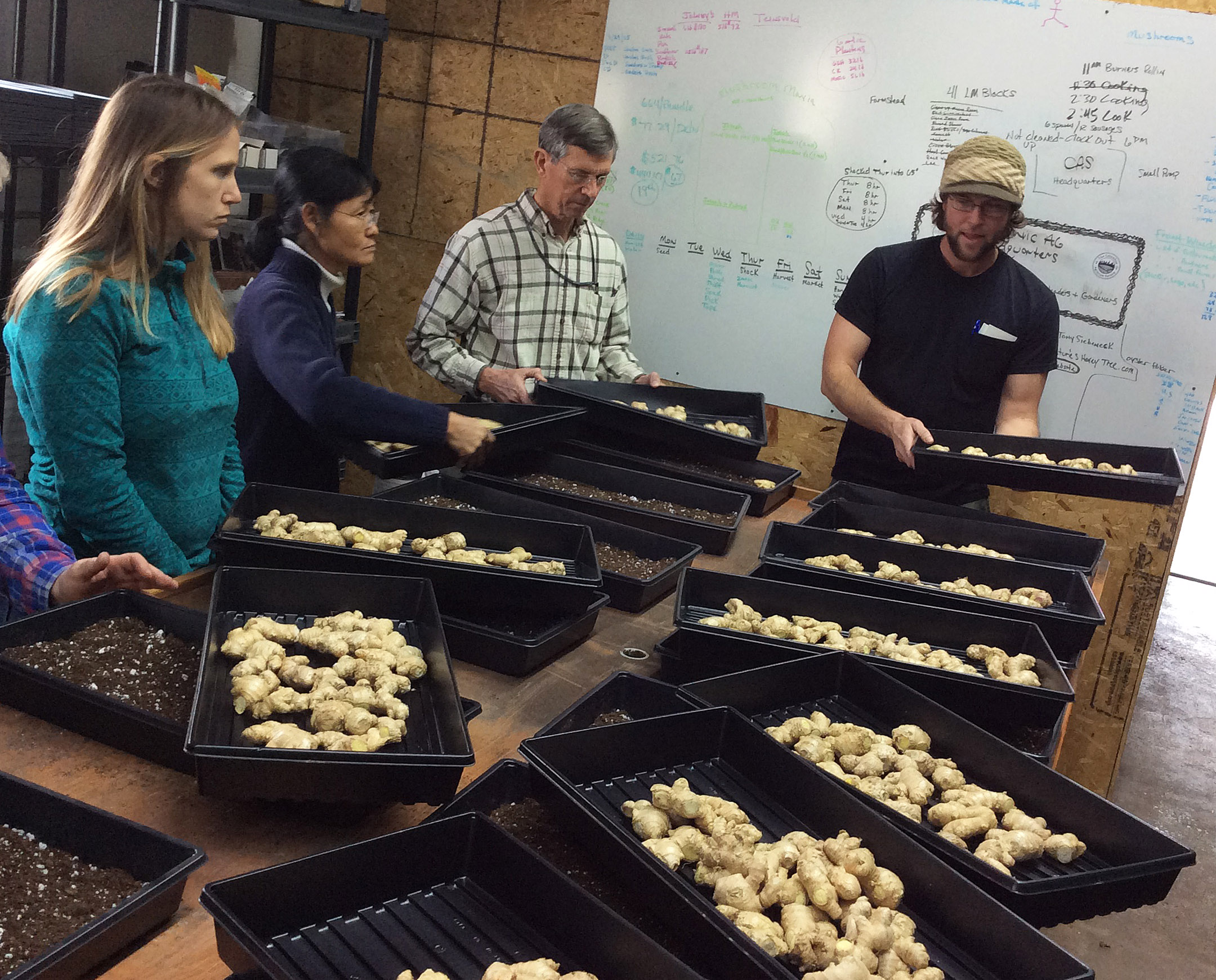
Joseph Swain, in black t-shirt, offering sage advice
• Do not let your ginger seed touch.
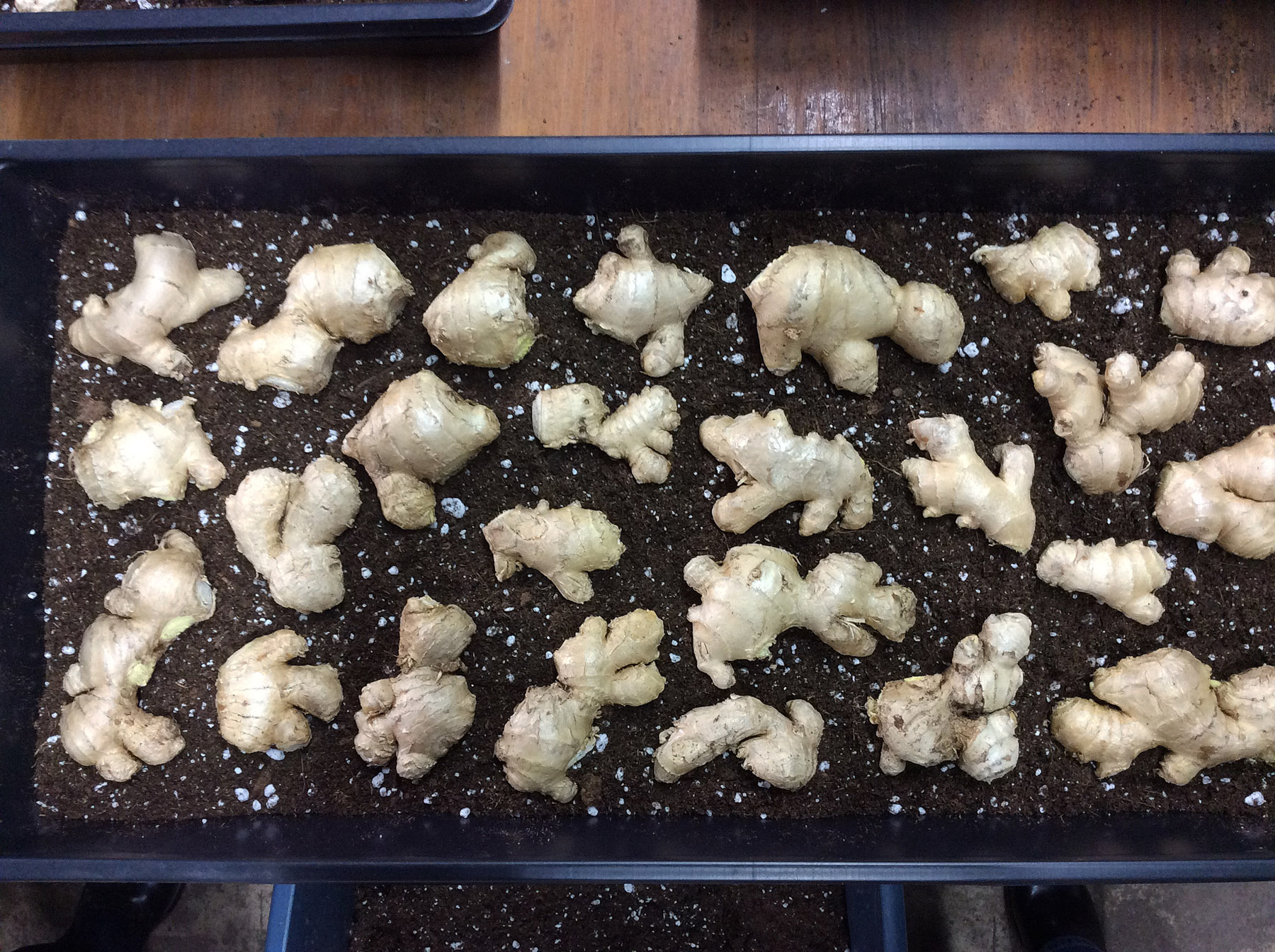
Placement of ginger
• Completely cover the ginger rhizomes and water them well.
• Do not let the ginger get too hot (over 80°) or too cold (under 65°)
• Monitor the moisture of the media and let the mix dry out, mostly, before you water again. Ginger rhizomes are prone to rot in overly moist soils.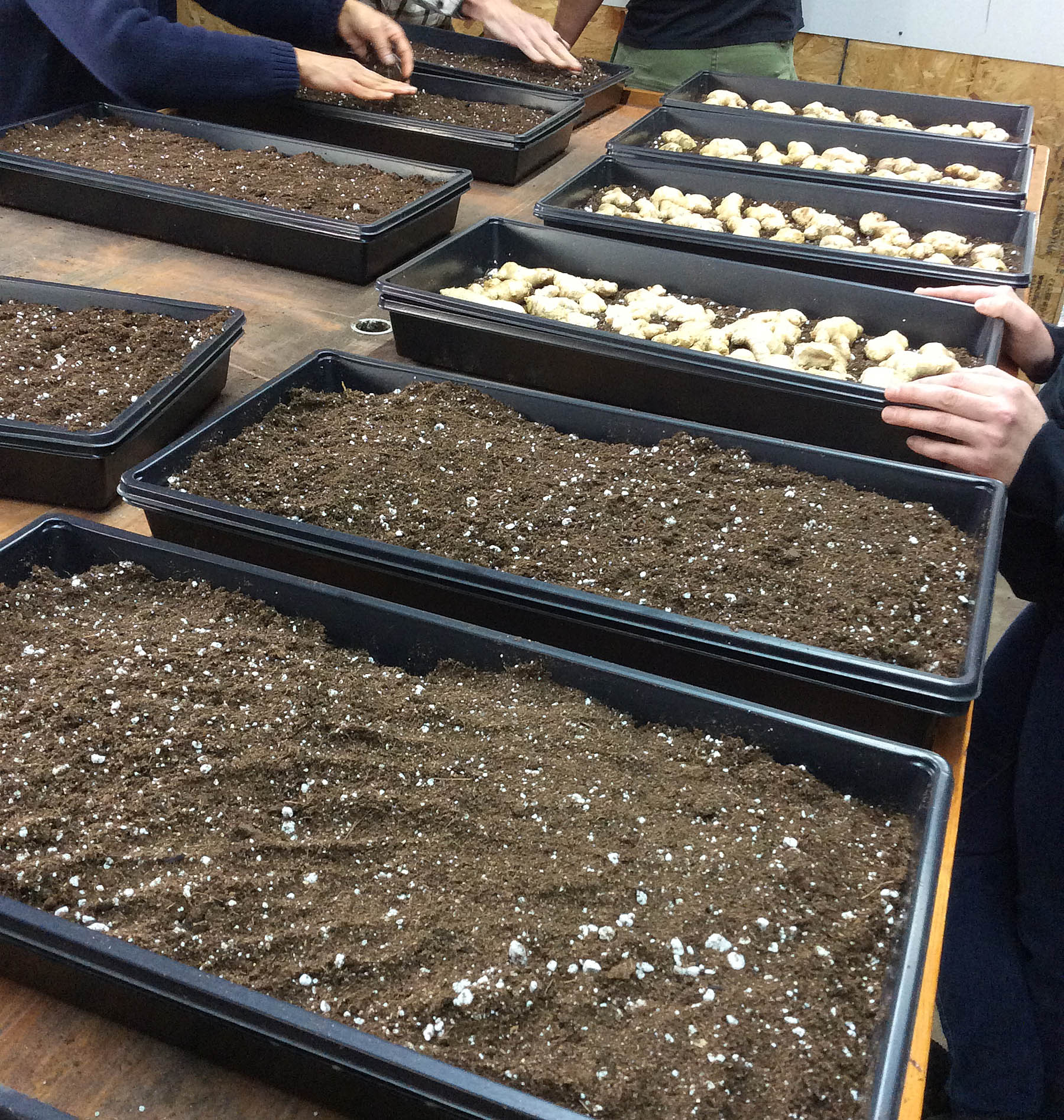
• Do not let the ginger get too hot (over 80°) or too cold (under 65°)
• Monitor the moisture of the media and let the mix dry out, mostly, before you water again. Ginger rhizomes are prone to rot in overly moist soils.

Almost done; just add water and vigilance.
I am hoping that I will be able to show you a bountiful harvest sometime in July. Maybe there will be enough to share…
